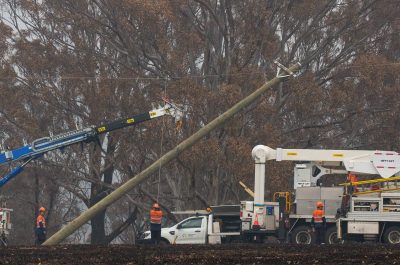Aiming for DERtopia, not dystopia
In past articles I’ve talked about the changes caused by distributed energy resources (DER), Data and how the electricity system is evolving to grapple with these forces. Today, I outline some of the priorities of distribution network service providers. (DNSPs), how they see their role changing as they become distribution system operators (DSOs) and the work they are doing to ensure customers continue to get safe, reliable, and low-cost service.
Customer–focused
It’s all too easy for us to start drawing exciting diagrams on whiteboards about future energy systems. At risk of getting in trouble with my fellow engineers, designing and implementing solutions are generally the easy part. The truly hard part is first coming up with the objectives to deliver what customers need in the long term.
It is critical decision-makers listen to customers about what they want instead of inflicting what they think customers need.
Over the past few years there has been a quiet revolution within DNSPs, where the voice of customer is getting stronger and stronger. It’s now reached a crescendo of “we want to maximise the benefits from our solar” or “we want our energy to be more sustainable.” It is from these ideas that the DSO is born.
While it may seem like we’ve done a lot of work, we’ve only scratched the surface and we need customers to help us understand what changes to the electricity system mean to ordinary Australians. That’s why we look forward to designing this future together with them.
What is a DSO?
Historically, the role of distribution network service providers has been to transport electrons from point A (the very high voltage transmission system) to point B (customers). In a world where electricity went in one direction, this was straightforward.
Today, and increasingly in the world of tomorrow, where electricity goes in both directions at different times of the day and year in different amounts, it’s an entirely different proposition. At its heart a DSO still performs the task of transporting electricity but in a more sophisticated way, optimising for variable renewable energy, network capacity and other factors. All of this is made possible by increasingly active resources in homes and businesses (such as solar, batteries and electric vehicles).
The four basic functions of a DSO
- Providing a safe and reliable service in a dynamic system – maintaining a safe and reliable service while optimising the supply and use of electricity in every second of every day. Imagine keeping a million plates (i.e., energy flows in all directions throughout the network) spinning in the air and you’ll come close to understanding the complexity involved.
- Giving customers options for how they use the network– as we look further into the future where more and more customers seek to export energy back into the system or connect their electric vehicles, it becomes apparent that a one-size–fits–all energy transport service will no longer be fit for purpose. In the future it is entirely possible that active prosumers may pay for higher levels of services compared to consumers that simply want safe and reliable electricity.
- Using pricing as a tool to get more from the existing network – pricing the use of the network is complex and requires careful consideration of equity, affordability, and fairness. However, it can also be a powerful tool for getting more out of the existing network by, for example, dynamically signaling to electric vehicles when there is an abundance of solar energy in a neighborhood for them to charge from.
- Supporting the overall system – increasingly the things that happen in distribution networks have an impact on the overall system and the energy markets. By leveraging the capabilities above and collaborating with the Australian Energy Market Operator (AEMO), DSOs will be able to provide much more sophisticated support to the wider national electricity network.
You can see early examples of the sophisticated services I mentioned earlier being offered by South Australia Power Networks and Energy Queensland.
Making what we have now, work for the future
Australia doesn’t have the luxury or the ability to easily or quickly swap out our electricity system like an old battery. That’s why DNSPs have been taking a step back to think about how the existing network can be better utilised to deliver value to customers and how the services customers receive now will need to change in the future.
Until they figure out a safe way to wirelessly transport bulk energy, we can and should continue to use a large proportion of the existing infrastructure, i.e., poles and wires, to move the electrons around. These existing solutions can be augmented by new technologies – like pole top batteries – that are much cheaper than building more network but achieve the results we need. We can do things smarter and more sustainably than we have in the past.
We should use what we have today and make the most of new and emerging technologies, so it contributes towards what customers want tomorrow.


